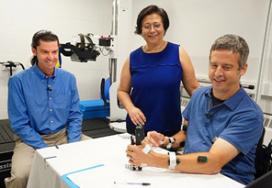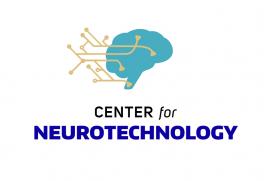Electrical Stimulation Helps to Restore Hand and Arm Function After Spinal Injury
Combining innovative electrical stimulation with intensive training has improved the lives of six people with spinal injuries in research at the Center for Neurotechnology (CNT), an NSF-funded Engineering Research Center (ERC) at the University of Washington.
The research suggests that noninvasive stimulation of spinal cord networks can help the human nervous system to reorganize nerve connections. When paired with intensive training, the electrical stimulation results in measurably improved limb function for all six of the research subjects with spinal injuries.
In the six individuals in this project, improved hand function persisted for at least three to six months without further treatment. Some participants regained hand function more than a decade after their injury and were able to return to their hobbies such as oil painting and playing musical instruments.



